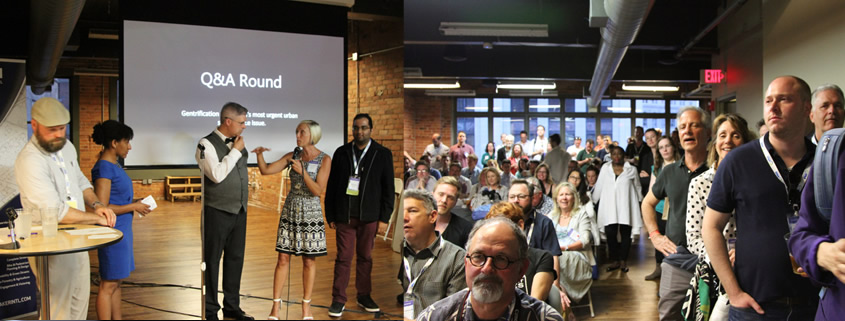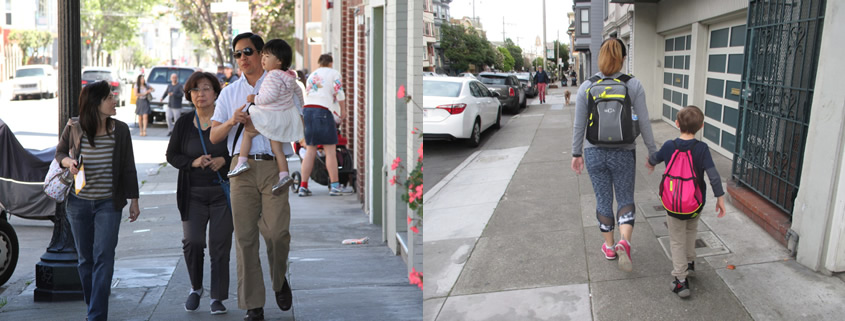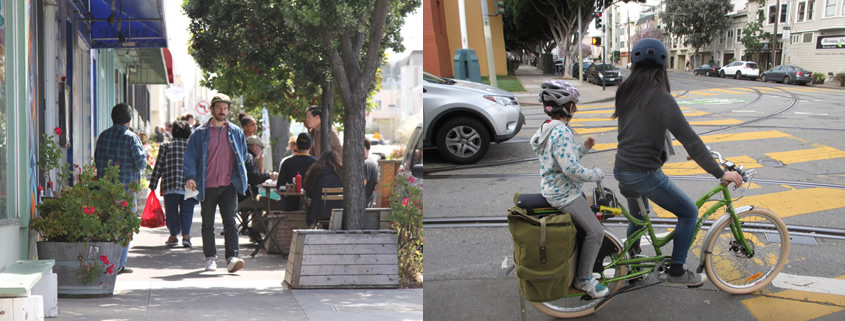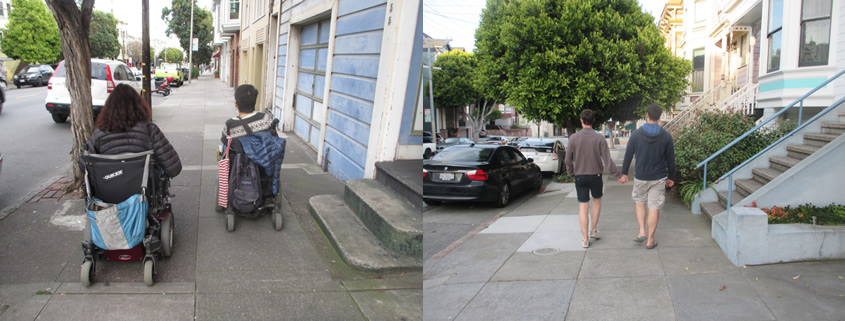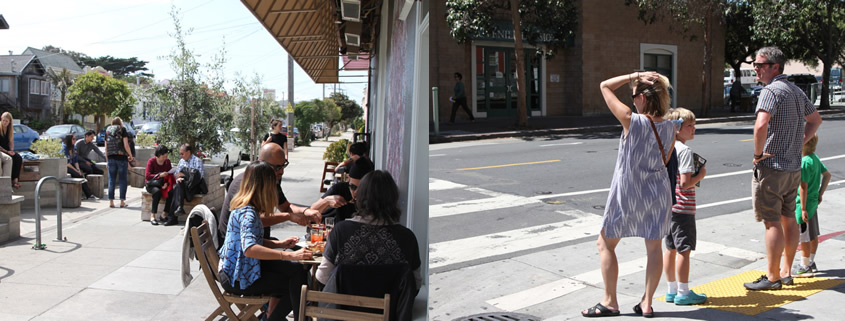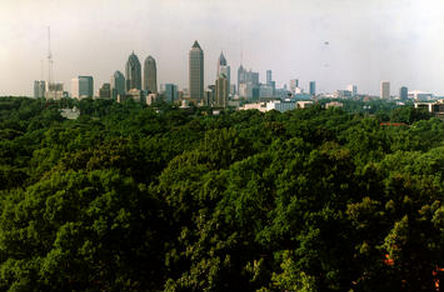The future of Mobility
I was walking home from downtown San Francisco and passed through the South of Market neighborhood. The area is full of tech company offices like Twitter, Uber, and Airbnb. I saw this minivan advertising, “Low Cost Commuting” and “Ride Share” with the Enterprise Rent-A-Car logo and thought hmmmmm.
As I got closer to home in the Mission District I saw this guy signing people up with coupons for free introductory rides. Evidently Enterprise is diversifying its business model. I asked Jim Kumon of the Incremental Development Alliance about ride share programs and he had this to say.
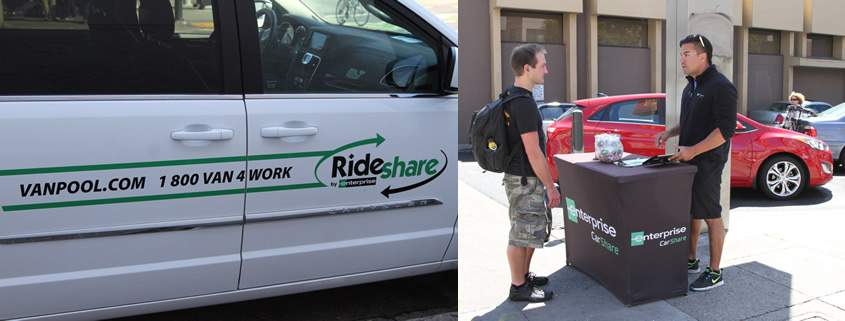
“Enterprise has neighborhood locations. Because those locations are not in airports, they don’t get hit with all the extra fees that go with ports, so its dirt cheap. Since they have the room to store extra vehicles and they are geographically dispersed in the right places a shared driver carpool can work. Definitely a major tool to make good-enough-urbanism work for post 1970s neighborhoods or hyper dense places where you can functionally have a pickup game in a car every day.”
Back in June I was in Detroit at a strongtowns.org event where I was asked to debate the impact of autonomous vehicles. I predicted that rather than each driver being chauffeured around in a private computer controlled car this new technology would be pressed into service as a form of hybrid mass transit similar to UberPool. Here’s a more complete explanation from a previous blog post.
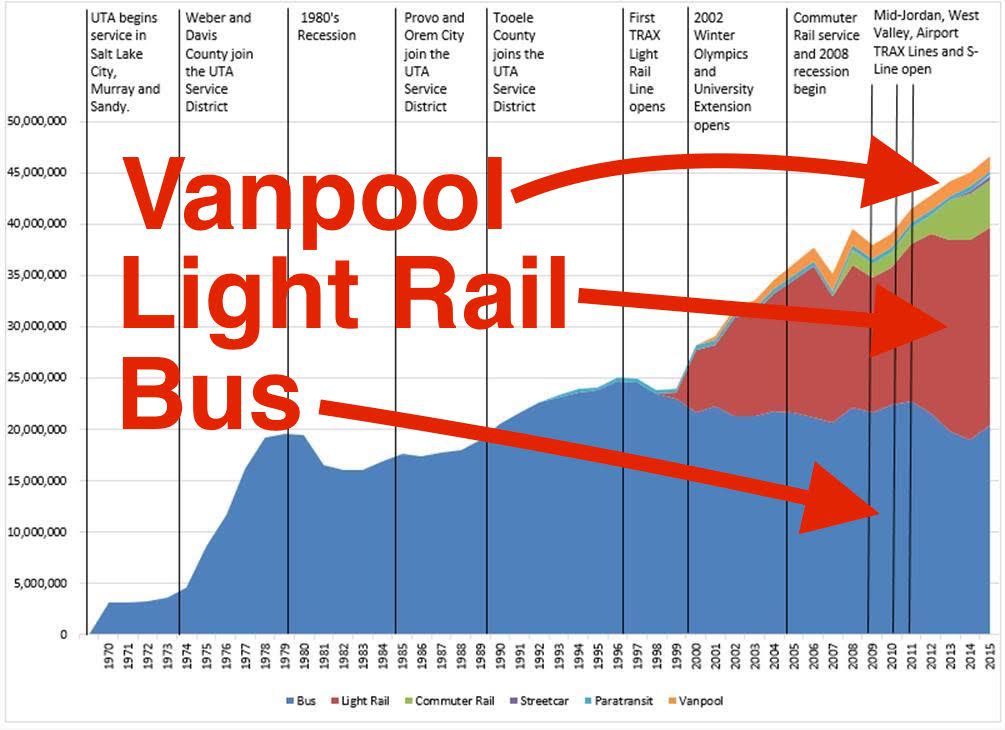
I started asking around and was informed by transportation engineer Jon Larsen in Salt Lake City that the Utah Transit Authority has been providing precisely this kind of commuter service for the past fifteen years as part of UTA’s Vanpool program. “[The vans] are owned by UTA, who pays for fuel, maintenance, repairs, etc, and the riders split a per-mile cost. The driver keeps the van at their house. I’ve got a neighbor with a long commute who’s a driver, and he loves it.” There is no central authority that determines the routes or times. The UTA simply provides the equipment and lets riders form their own agendas.
Salt Lake is a predominantly suburban city where traditional rail and bus transit simply doesn’t work well in many peripheral locations. Self organizing commuter vans achieve all the goals of transit (reduction of highway traffic, cost savings for passengers, minimized fuel consumption, environmental benefits, etc,) in a way that works in a suburban region. The graph above shows that Salt Lake is gradually evolving into a city of resurgent urban neighborhoods that enjoy an excellent light rail system while suburban areas are increasingly accommodated by shared commuter vans. In contrast, city buses are losing market share on both fronts.
Tech companies may eventually refine this kind of operation with all sorts of bells and whistles, but the folks in Utah demonstrate that nothing more complex than a fleet of existing vehicles, plain vanilla drivers, and a bit of pragmatic self selecting bottom up organization can do all the heavy lifting.
Over the last sixty years we’ve built so much dispersed horizontal development that we’re going to have to continue inhabiting it for a very long time – come what may. Expensive and unwieldy mass transit systems have never worked outside of well established urban centers and their nearby satellite towns. Decentralized, flexible, low tech, and affordable work-arounds just make more sense even if they aren’t as sexy as an Elon Musk electric autonomous vehicle or a bullet train.
One more thing… You will recall that I walked from downtown back home on my journey that uncovered the Enterprise Ride Share plan. My route was just over three miles. In a place like San Francisco it’s actually a pleasure to be on foot and get around with no more advanced technology than shoe leather. We could just build more places like this. Just sayin’.
John Sanphillippo lives in San Francisco and blogs about urbanism, adaptation, and resilience at granolashotgun.com. He’s a member of the Congress for New Urbanism, films videos for faircompanies.com, and is a regular contributor to Strongtowns.org. He earns his living by buying, renovating, and renting undervalued properties in places that have good long term prospects. He is a graduate of Rutgers University.
This article was first published by newgeography.com on 9/3/2016


